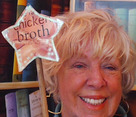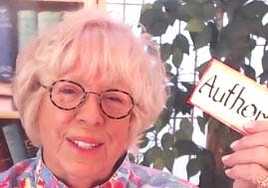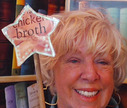|
According to Sandra Beckwith (awesome creator/writer/director of "Book Buzz), Amazon is taking steps to prevent authors from enlisting F&F (friends and family) or paying outsiders to favorably review their their books. CLICK HERE TO reach the link to Sandra's column. Includes great info on how to participate in Amazon's Kindle review program and how to acquire legitimate reviews for your book.
0 Comments
 Question: What could be better than a former publisher, editor and author for Better Homes and Gardens, Harper Collins, Workman, and Simon and Schuster, etc., to help you navigate the learning curve between polished manuscript and published book on the shelf at Barnes and Noble? Answer: A snarky, know-it-all Publishing Wizard who, with magic wand in hand, is now on the job and available to respond to your questions about any aspect of the "how to get published" process. From self-editing to query submission packet to launching an agent quest, The Publishing Wizard knows all and tells all. CLICK HERE to meet her. Resist the temptation to make a sarcastic comment about the happy-hands-at-home handcrafted magic wand. The structure of any magic wand (even one constructed with duct tape, dowel, a chicken soup carton, and glitter glue) is not nearly as important as the intention behind it. We live in a digital world. Almost totally.
This impacts writers. Their query submission email probably will be read on small screens of laptops, tablets, and/or smart phones. People (and agents are people) read wherever they happen to be: on the commuter train, at the gym, even at the beach. Their smart phones are with them . . . always. Therefore, when you submit a query submission packet that can be read on a small screen, the agent appreciates this consideration and also makes a mental note that you are aware of industry trends. You've taken the time and made the effort to submit material to them in a format that makes it easy for them to read it. A digital-friendly query submission packet increases the probability that your material will be read instead of being sent to delete-ville. If you need some assistance in figuring out how to format your query letter, request my FREE Query Template. CLICK HERE. All writers feel concern, and a certain amount of stress, over the time and effort required to revise an entire book. Here's a process to consider.
Before you begin your second draft with all that this involves: evaluation and revision of revision of flow, dialogue, characterization, etc., review your first chapter (only) to identify writing mechanic errors. For sure, you'll find a bunch of them. (Remember, your first draft was just that, a first draft. You "vomited it out," knowing you'd clean it up afterwards.) When you examine and revise errors out of your first chapter, your "inner editor" pays attention to these same issues as you progress through your entire document. You'll be more alert to repetition of certain words that really truly need to be revised. It's important to revise weak words like "was" and "get," and verbs that end with "ing." Then, as you work your way through the 2nd draft, even though you are focused on context, not line editing, you'll begin to spot and revise the weakies. This helps you launch a new writing habit: utilizing strong verbs. BTW: Check out my $7, 7-page tutorial, "35 Red-Flag Words that can Block Your Publishing Future." Locating and removing these rascals is reasonably easy using a Search-Mark-Replace program that's included in the tutorial. Available at MolliMart. |
If you’d like to re-post any of my blogs, help yourself. Please reference the source as: Molli Nickell. THE Publishing Wizard at www.getpublishednow.biz Archives
July 2016
Categories |


 RSS Feed
RSS Feed
